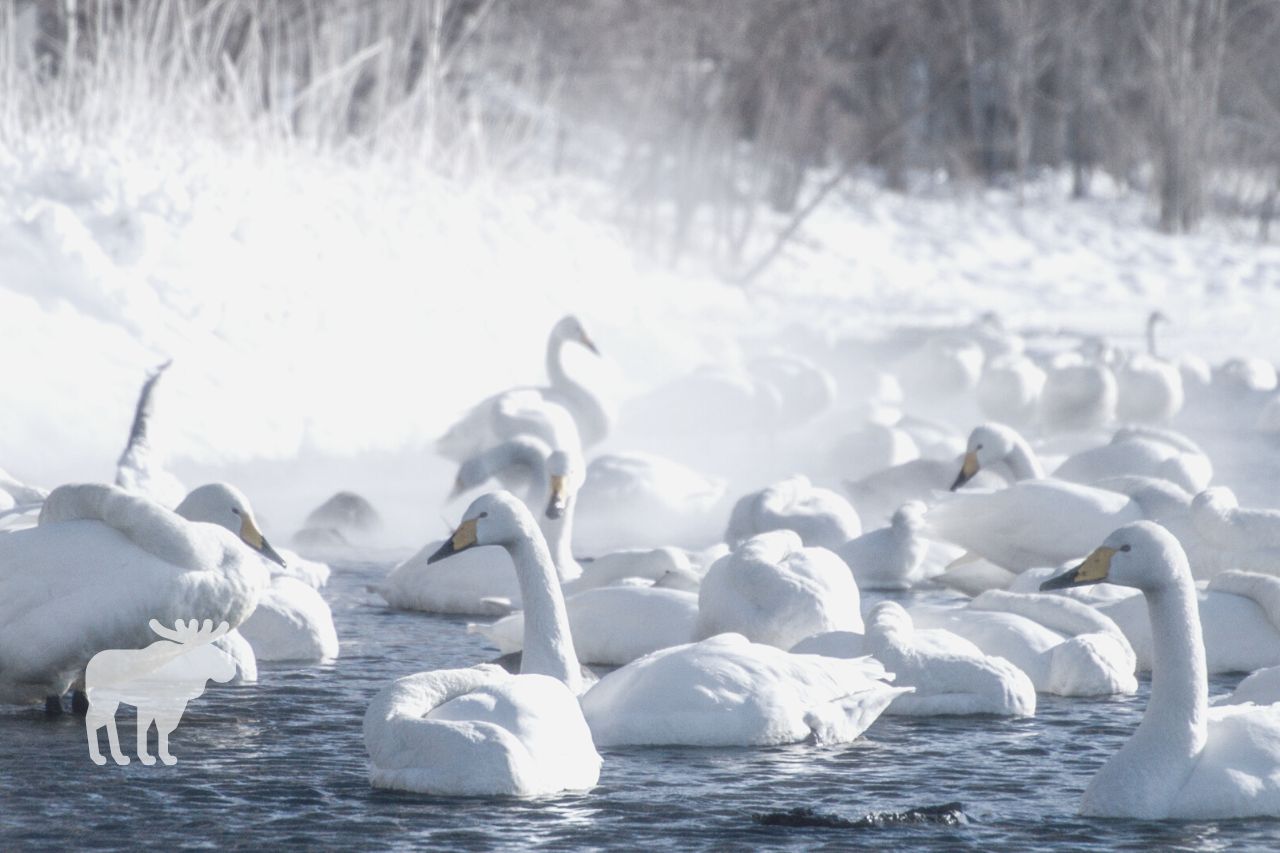Have you ever seen a V-shaped formation of swans flying across the sky? Perhaps it led you to wonder about the migratory habits of these magnificent birds. Where do swans go in the winter? Do they migrate, or do they tend to stay closer to home and wait out the cold months the best they can? If so, what do they eat during the winter? Keep reading! All of these questions will be answered in detail throughout this article.
What You'll Learn Today
Do Swans Migrate?

Many species of swans migrate, but not all of them. Even within a single species, some living in one region may migrate while those living in another region may not.
For example, mute swans that live in northern parts of Europe often migrate to Middle Eastern regions in the winter. Meanwhile, mute swans living in North America typically don’t migrate at all.
Among the swans that migrate, they typically do so in late fall and early winter. They migrate in search of a warmer climate and more abundant food sources, as their summer homes are often too cold for them to survive the winter.
Some swans migrate during the spring and summer for the sake of breeding. Whooper swans and Bewick swans, both found in the United Kingdom during much of the year, travel to Arctic tundra regions in the summer to mate before returning with their young a few months later.
Still other swans migrate in search of food. When food becomes scarce during the winter, or if they find food shortages at other times of the year, they will take to the skies and migrate to areas where food is more abundant.
Worldwide, swans are generally known for migrating, though most of the swans found in the United States do not migrate. Some swans found in Alaska and far northern parts of North America will migrate into the Lower 48 during the winter, but those already living farther south tend to stay put as long as food is abundant and temperatures don’t drop too low.
Where Do Swans Go In the Winter?

Swans are found throughout the world, and different species and populations travel to different regions when migrating. Generally speaking, most swans in the northern hemisphere head south during the winter and north during the spring and summer.
In North America, western tundra swans migrate to areas of northern California and parts of British Columbia, while eastern tundra swans cut across the continent and head for areas along the Atlantic coast.
Trumpeter swans travel from Alaska to parts of Washington state and Vancouver Island.
Both trumpeter and tundra swans already living farther south generally don’t migrate. Mute swans, a non-native species found throughout the United States, rarely migrate and have no specific migratory routes; they will simply move to new regions if they need more food or slightly warmer temperatures to survive.
In Europe, whooper and Bewick swans travel between the U.K. and the Arctic for breeding, as discussed above. Also as mentioned, mute swans in this region often journey to the Middle East in the winter.
Swans in other parts of the world may migrate but don’t have well-defined migratory paths. Instead, they simply move with the food sources or travel small distances to slightly warmer regions as necessary.
Check out this video to learn more about swan migration:
What Do Swans Eat In the Winter?
Swans don’t necessarily change their diet in the winter. That said, some of the foods they eat throughout the rest of the year may not be as plentiful in the winter, so they may rely more heavily on alternate food sources.
Swans generally eat plants: those they find growing in the water, along with grasses, grains, seeds, wild berries, and leaves. In the winter, they may eat a greater number of grains, or they may rely on supplemental feedings from humans who give them bread, corn, oatmeal, or grated vegetables to eat.
Swans eat about a quarter of their own body weight; that can be as much as 7 to 8 pounds of food every day! In the winter, they may spend more of their time sleeping, which reduces their food requirements and enables them to eat less.
With this in mind, as long as food is sufficient in a given region, the resident swans will be less likely to leave. If they begin to exhaust the local resources, or temperatures drop low enough to kill most of their food sources, they may find themselves compelled to move onto different areas for the sake of survival.
Conclusion
Swans are known for being migratory birds, but only a few species found in North America and Europe have well defined migratory routes. The rest either stay put during the winter or travel just far enough to find food and warm enough temperatures to allow them to survive.